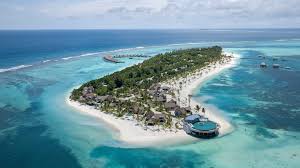Around the world, many countries feature unfavourable climate conditions, whether it may be too cold for certain travellers or too hot. We previously discussed some of the coldest countries in the world. On the flip side, the hottest planets continue to reach scorching temperatures due to rising global temperatures causing extreme weather around the world.
The hottest countries in the world are mostly located close to the equator. This, combined with climate factors, results in hot temperatures throughout the year. Here are eight of the hottest countries in the world.

1. Mali
A country in West Africa called Mali has scorching temperatures with an average air temperature of 28.3°C (82.9°F). This destination is renowned for its arid landscapes and deserts. Residents in Mali endure heatwaves exacerbated by phenomena like El Niño. The Kayes region saw temperatures up to 48.5°C (119.3°F) in early 2024. This country experiences challenges with agriculture and water access due to the scorching heat. Aside from the heat, it is rich in culture and history.

2. Burkina Faso
Another West African country with similar climatic conditions is Burkina Faso. This region has an average air temperature of 28.3°C. This region is divided into three climate zones. The zone with the driest conditions of the three is the Sahelian region. 2024 recorded heatwaves that pushed temperatures past 45°C (113°F).

3. Kiribati
The island Kiribati is situated in the Pacific Ocean near the equator. This destination is among the hottest countries in the world. This region has an average temperature of 28.2°C (82.8°F). Due to its geographical location, its hot temperatures are persistent, and the island’s tropical climate is also impacted by the oceanic conditions. As a result, the heat intensifies with rising sea levels and warming waters.

4. Djibouti
Djibouti is located in the Horn of Africa with an average air temperature of 28°C (82.4°F). The country gets little rainfall and experiences extreme heat, particularly in its coastal and lowland regions. The northern highlands of the county are slightly cooler than the lowlands. However, you cannot entirely escape the heat because the weather is still harsh. The country also faces challenges with water scarcity, which significantly impacts the daily lives of residents.

5. Tuvalu
Tuvalu is a tiny island in the South Pacific with an average temperature of 28°C. The climate is influenced by the rising sea levels and warming oceans. This low-lying country has an elevation of barely two meters above sea level. Tuvalu is highly susceptible to climate-induced heat and environmental challenges, which threaten its very existence.

6. Senegal
Another region in West Africa that is among the hottest countries in the world is Senegal, which has an average air temperature of 27.9°C (82.2°F). In northern Senegal zones, there is low rainfall, and Senegal also faces challenges with heatwaves and limited water resources.

7. Mauritania
Mauritania is located in Northwest Africa with average monthly temperatures around 27.7°C (81.9°F). This region is widely known for its hot, dry, and windy climate. Most of the country is occupied by the Sahara Desert. The heat intensifies during the summer months from May to October. The region also has minimal rainfall due to the desert.

8. Maldives
Among the hottest countries in the world is the Maldives, which is renowned for its pristine beaches and turquoise waters. While this destination is beautiful, it experiences an average air temperature of 27.7°C.
The climate is influenced by the rising ocean temperatures, and it is at risk from the rising sea levels. March to May are the hottest months, with temperatures sometimes reaching their peak.
Challenges and Adaptations
While these areas may provide a wonderful travel experience, there are many challenges, such as water scarcity, heat-related health issues, and agricultural difficulties, when it comes to living in these countries. However, through the resilience of the residents, they came up with innovative ways to combat the extreme heat, including innovations in water conservation, traditional cooling methods, and climate-resilient crops.

